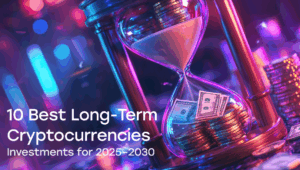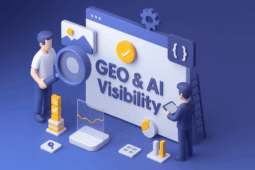share
Decentralized technologies will likely become the basis of the future Internet. The move to Web 3.0 will not happen overnight. However, solutions similar to decentralized applications are already here.
According to DApp.com, over 2,700 DApps have been released as of early July 2019. About half of them are supported by developers. More than 150,000 users access the DApp daily, making more than 2 million transactions.
Let’s dive deeper into the DApp development process and the features of these apps. We’ll also examine their pros and cons. Find out how DApps work in general and what you can do with them. Plus, here, you find in what areas the demand decentralized app creation is most needed.

Starting With Basics of Decentralized Apps
First of all, let’s look at the basic terminology. DApps operate via blockchain technology or a peer-to-peer network. They are open-source and resistant to attacks. In many ways, they can be compared to smart contracts that operate on the Ethereum blockchain. But they also have key differences. For instance, DApps are not limited only to financial transactions. Their goal can be achieved using any blockchain.

To fully understand the DApp development process, we need to look at the tech behind them (blockchain). It’s a sort of source that looks at transactions and stores info about them. Also, it locks all user funds in a decentralized network.
Today, this tech is most popular in the areas of insurance, finance, and healthcare, and it’s likely to penetrate almost all areas of life in the future. Needless to say, the data stored in the blockchain can’t be accessed by hackers.
When talking of blockchain platforms, Bitcoin cryptocurrency is what most likely comes into mind. But when discussing developing DApps, readers will likely learn about a different crypto: Ethereum. Today, most decentralized applications operate using the Ethereum network.

Decentralized Application Essential Features
A DApp needs to possess the following features:
- Open-source platform.
- Decentralized nature (during the creation, the development company does the app using a cryptographic algorithm similar to blockchain).
- Crypto tokens or digital assets for refueling.
- Reports and data are stored in a public area on decentralized storage.
- A specific protocol that generates tokens. It also should have a built-in consensus mechanism.
The Ethereum platform is the true founder of dApps that provide a decentralized virtual machine. It operates together with Turing, which works via public blockchain nodes.
The main feature – is decentralized code. It’s hosted on thousands of computers and executed in parallel. In case of failure, when a network node refuses to execute the code, the same one is fulfilled on all other network computers.
Today, a lot of decentralized applications on the market run on Ethereum. But at some point, other platforms like TRON and EOS with intuitively understandable user interfaces have emerged.

All the Main Advantages
Compared to traditional app development, creating a decentralized app allows customers to get several important advantages:
- Privacy. All the data is stored in the form of many encrypted copies, but only the key owner has access to it.
- Speed. Instead of constantly accessing the nearest server, all data can be accessed from nearby devices.
- Sustainability. In the absence of a single centralized server, it’s impossible to destroy info or block users’ access to it.
- Total anonymity. Most DApps do not need your identity. You just need a login and a verified crypto wallet.
- Such apps provide high protection against DDoS attacks, SQL injection, XML bombs, and cross-site leaks.
In addition, DApp developers indicate resource pooling as an additional advantage. The power of blockchain platforms already surpasses the most powerful computers in the world. And the field has just begun to develop actively.

DApp’s Disadvantages
As we mentioned, open source is one of the main characteristics of a DApp. However, this is also its drawback. Any hacker can explore the code in detail, find vulnerabilities, and try to organize an attack.
In addition, DApp developers consider the following points to be disadvantages:
- Low usability (few users understand the features of such add-ons. So, it can be difficult to understand the user interface);
- The handling complexity (after the release, introducing new features or fixing bugs can be problematic, so you need to spend a lot of effort on preliminary testing);
- Network delays (which is why you need to check whether too many computing resources will be loaded).
The last of the shortcomings can seriously delay submitting transactions and break the entire business logic. However, thorough test network operations before the release will help avoid maintenance complexity and delays.

DApp Examples
At the moment, DApp development is in great demand in all areas, from finance to virtual gambling. Dapp.com statistics reflect that at least 2,500 decentralized applications were released in the summer of 2019. Now they are actively working and improving. Vivid examples include:
- Uniswap — a platform that runs on Ethereum smart contracts;
- Auctionity — a platform with secure virtual auctions;
- Crypto Kitties — a game that became popular in the Ethereum blockchain at some point.
Also, a good example is Blockstack. It improved the development environment, allowing users to freely create a decentralized application. Thanks to this blockchain platform, more than 270 different projects are already running. However, unlike most DApps, Blockstack works with BTC, not ETH.

What Is DApp Development?
In general, creating a DApp is similar to the standard mobile app development, subject to certain business requirements. Specialists create one DApp after another, and each of them cannot be hosted on local or cloud servers. This distinguishes them from traditional add-ons.
Creating decentralized apps requires great care and rigor to write code. Then, it should be studied before the project is approved for release. Developers must conduct full-scale testing before the technology stack is offered to users.
For example, once smart contracts have been published on the entire network, they cannot be revoked. This can lead to financial losses and reputational damage to the brand that made a mistake. It’s not possible to release a minimum viable add-on and force users to test it independently to get material for future updates.

How to Build Dapps: Where to Start?
Active blockchain development allows people to open up thousands of new business opportunities. But to succeed, the owner must offer maximum security, transparent transactions, and fast processing. By moving away from centralized services in favor of decentralized applications, you can ensure that these tasks are completed.
DApp Development Process in 5 Steps
Most likely, you already have a question about starting app development. Also, it’s interesting what stages the creation of a quality product involves. Typically, experts usually spot the five main steps for creating Ethereum DApps:
Step 1.
The first step is to identify the problem to be solved. The client should clarify what tasks the application created by blockchain developers will solve. You need to highlight the challenge list that complicates doing business. Then, assess how DApp development can solve the problems described.
Step 2.
The second step includes the creation of a Proof of Concept (known as PoC). Some experts call this initial testing. It helps to check the effectiveness of DApp development before spending a fortune on the process. Preliminary testing will allow you to find out problematic points. It also helps to explore security risks & prospects for improving the Ethereum DApp project.
Step 3.
If the second step was successful and the Proof of Concept fully contents both the client and the performers, move on to direct app development. Most likely, the Ethereum platform will be the best option, thanks to the presence of first-class smart contracts. However, check out other options for building DApps as well.
Step 4.
Once the platform is selected and agreed on, DApp development needs to begin. Make sure that specialists’ testing is thorough, with regular quality control throughout development.
Step 5.
Last, you must test the application created using the Ethereum virtual machine. And then you can think about launching the new project into the public domain!

However, be aware of the difficulty of fixing bugs after release. The technical side of app development is quite complex, so it is better to turn to specialists such as ICODA. This will allow you to get a first-class product and save yourself some of the time.
Determinants of the Cost of Development
So, now you know the sequence in which DApp development takes place. Another question: “How much should it cost”? To prepare an excellent development environment and predict the budget, it’s worth considering four main factors.
Industry
The first factor is the area for which the project is being created. Each industry is unique and has special requirements that DApp developers need to adapt to. In addition, some areas are heavily regulated by law. Plus, the competition within the industry will influence the cost and quality requirements of the UI.
Complexity
Not surprisingly, when building DApps, every new project will differ in complexity. In order to assess how time-consuming the process of creating a DApp will be, ask yourself:
- What blockchain data platform will you use?
- What tech stack do you choose?
- Will it be necessary to create a separate API?
In any case, creating a project from scratch is very hard and time-consuming. This is why most clients try to use ready-made development environment layouts.

DApp Type
Also, the price of the finished project depends on more than the DApps function. It also depends on the type of application. Before creating a sketch, it’s worth conducting a detailed overview to select the appropriate option:
- Type I DApp development — Such apps are created based on their own blockchain. For example, Bitcoin or Ethereum.
- Type II DApp development — Similar projects are created on I blockchains. Such apps are protocols and have fungible tokens. An example would be Omni.
- III Type DApp development. These add-ons use type II protocols.
Of course, different types require different amounts of time and effort to develop. So, if too many computational resources are used during the project’s carriage, the final cost will be quite high.
Labor Costs
To determine how much to invest in a DApp, take into account the labor costs. It usually depends on:
- The size of the professional team.
- Locations (outsourcing or outstaffing).
- Inclusion of insurance and vacation pay in wages.
- Different professional levels of developers.
Each of the described four factors affects the cost of creating an application on the blockchain platform.

Smart Contracts for Making Decentralized Applications
To start DApp development, you need to use blockchain. Ethereum is ideal because it has a system of smart contracts. Let’s see why this feature is so important.
What Is a Smart Contract
A smart contract in DeFi is a segment of code that can be executed automatically. The smart contract code is usually used by the blockchain to increase its reliability and protection. Every smart contract acts as a building block for the blockchain network that, compared to centralized servers, eliminates the central authority and provides greater security.
Today, smart contracts acquire the functionalities of decentralized finance protocols, which boosts their efficiency. The language used to write smart contracts on Ethereum is Solidity. It requires a fundamental understanding of cryptocurrency and knowledge of coding.

How Are Smart Contracts Used in Dapps Development?
Speaking of DApps, the use of a smart contract instead of a conventional request makes apps decentralized, which serves its core purpose. Moreover, applications of a smart contract with ICODA include the creation of specific tokens for a variety of protocols to streamline operations and introduce verifiability, establishing pre-sales and sales phases of your cryptocurrency and blockchain projects, and much more opportunities.
Using a smart contract enables businesses to reduce their expenses and risks by eliminating the reliance on manual labor to improve productivity in the long run, which ultimately drives growth and progress.

Hybrid smart contracts combine backend code running on the blockchain with off-chain data and computation provided by decentralized networks. They enable advanced forms of economic and social cooperation that have the properties of a blockchain. It provides security and immutability while using secure off-chain services to achieve:
- Scalability.
- Privacy.
- Order fairness.
- Connectivity with an external data source or system.
Through smart contracts, it is possible to create an additional token for service purposes. More than 250,000 token contracts have been formed on Ethereum alone using ERC-20.
Traditional App Development
Traditional basic applications are operating on a mainframe environment or on a client-server environment. In contrast, professional programmers make dApp development as simple as traditional development while still providing users access to all the benefits of dApps.
The main programming languages used in Android App development are Java, XML, PHP, JavaScript, and Swift.

Pros and Cons of Traditional Apps creation
During the traditional app creation, developers have control over how the code is written and how applications are structured. It can also be accomplished using any programming language and platform.
As for the disadvantages, traditional coding is time-consuming. It takes a long to manually alter the code to support several platforms and build sockets and other user interfaces between applications.
What Are Decentralized Network Apps Used For?
The solidity, speed, and scaling of blockchain data platforms make DApps indispensable. They are especially popular in finance, IoT, and the gaming industry.
DeFi Dapp Development
Financiers were the first to learn that reliability & speed can globally reduce their costs. Banks, payment systems, and investment companies report that they use blockchain solutions — for example, JPMorgan, Societe Generale, and Santander. All of them have partly abandoned central authority in favor of decentralization.
Here are some interesting statistics: according to DeFi Pulse, the value of DeFi digital assets exploded from $1 billion in 2019 to $15 billion in 2020. Another growth spurt to $87 billion was recorded in May 2021. At the same time, DeFi is still at an early stage of its development. Wide popularity is yet to come!

DApps for the Internet of Things
The Internet of Things is a new global network of interacting devices. It will allow us to make life safer and more comfortable. Cars, machines, sensors, and household appliances can interact within networks to optimize performance.
By 2022, the number of devices in the global network is likely to exceed 18 billion. Such systems require new levels of reliability, speed, and scalability. So, blockchain and DApps development are excellent solutions.
Now, DApps in IoT is being tested by the world giants such as Bosch, Volkswagen, Fujitsu, etc.

DApps for the Gaming Industry
DApps can successfully function as mobile games and change the market. With the help of blockchain, developers will be able to achieve freedom from Google Play and the Apple Store. These platforms control most of the world’s multimedia content and earn billions from developers.

According to Statista.com, the global income from DApp games in the coming year will easily cross the line of $500B dollars. Examples of decentralized gaming platforms include Playtowin.io, BetHash, Dice2win, and Xether casinos. In addition, many gambling establishments continue to develop and introduce innovative investments in cryptocurrency.
Prospects of DeFi App Development
Perhaps the most important advantage of DApp development over the conventional web apps is innovation without permission. Decentralized assets are completely open and don’t have controlling parties. So, they allow developers to create, freely experiment, and expand the space in organic and unexpected ways using the convenient development environment.

Also, DApps easily contribute to combinatorial innovation. This is because they are not burdened with trade secrets, copyrights, trademarks, or patents, meaning the entire area can benefit from individual progress based on the efforts of others. This way, the future of DApp development is undoubtedly bright and promising. They are obviously more convenient for the modern world than traditional applications.
Takeaway
So, let’s recap! A DApp is an application that runs without a backend on a decentralized computer system, for example, on a blockchain. The most popular platform for creating decentralized projects is Ethereum. DApps use the main advantages of the blockchain — transparency, reliability, and data immutability.

Decentralized add-ons are developed using smart contracts, the code of which is written in a special programming language. For example, Ethereum has the Solidity smart contract language, and the Waves platform has RIDE.
While developing DApps, problems of centralized services will be a thing of the past. The loss of any code fragment on the blockchain will not cause the rest of the network to malfunction, and DApps (unlike traditional apps) will function as before.








